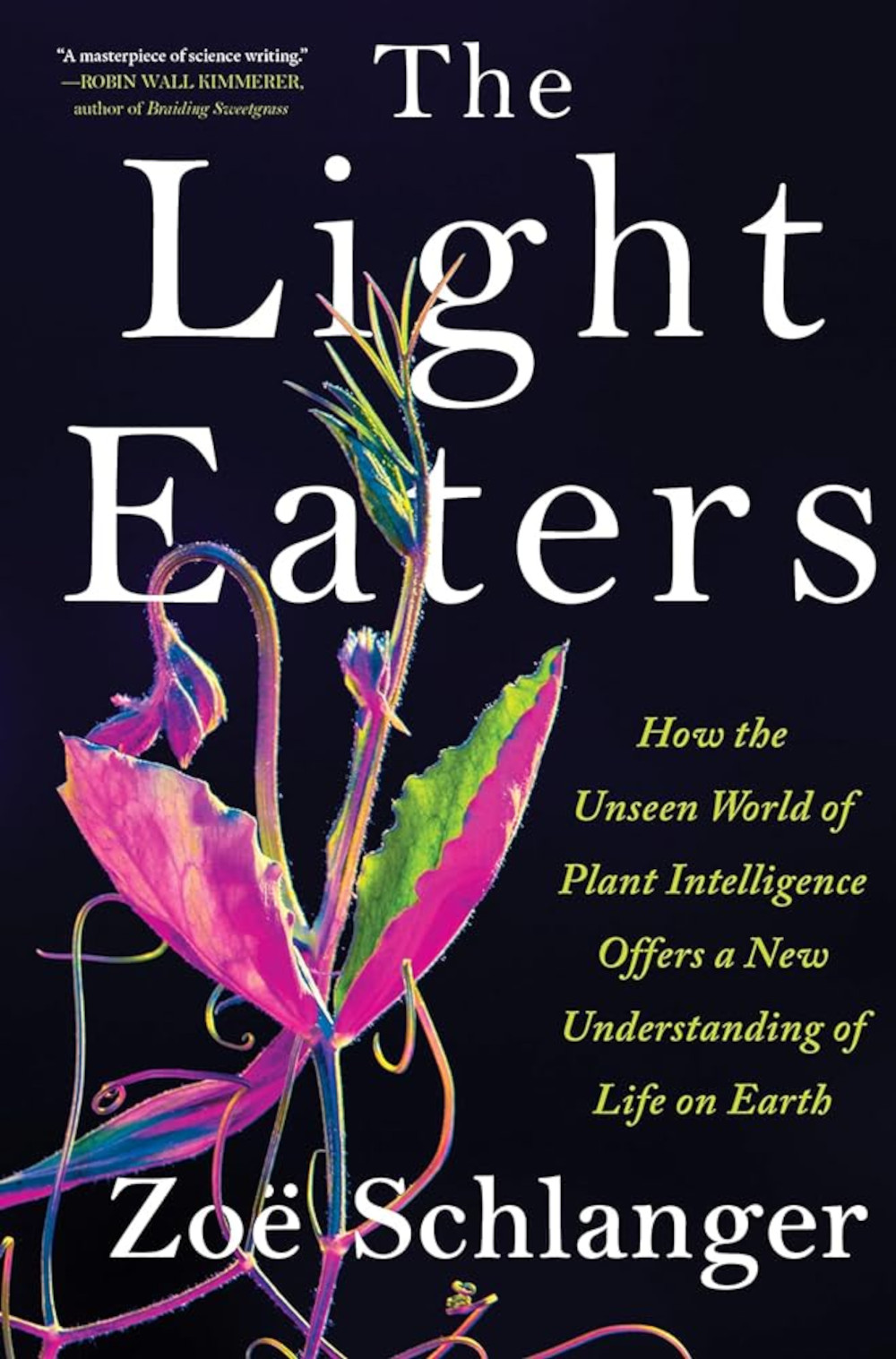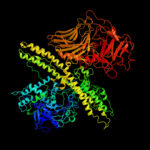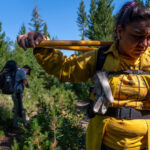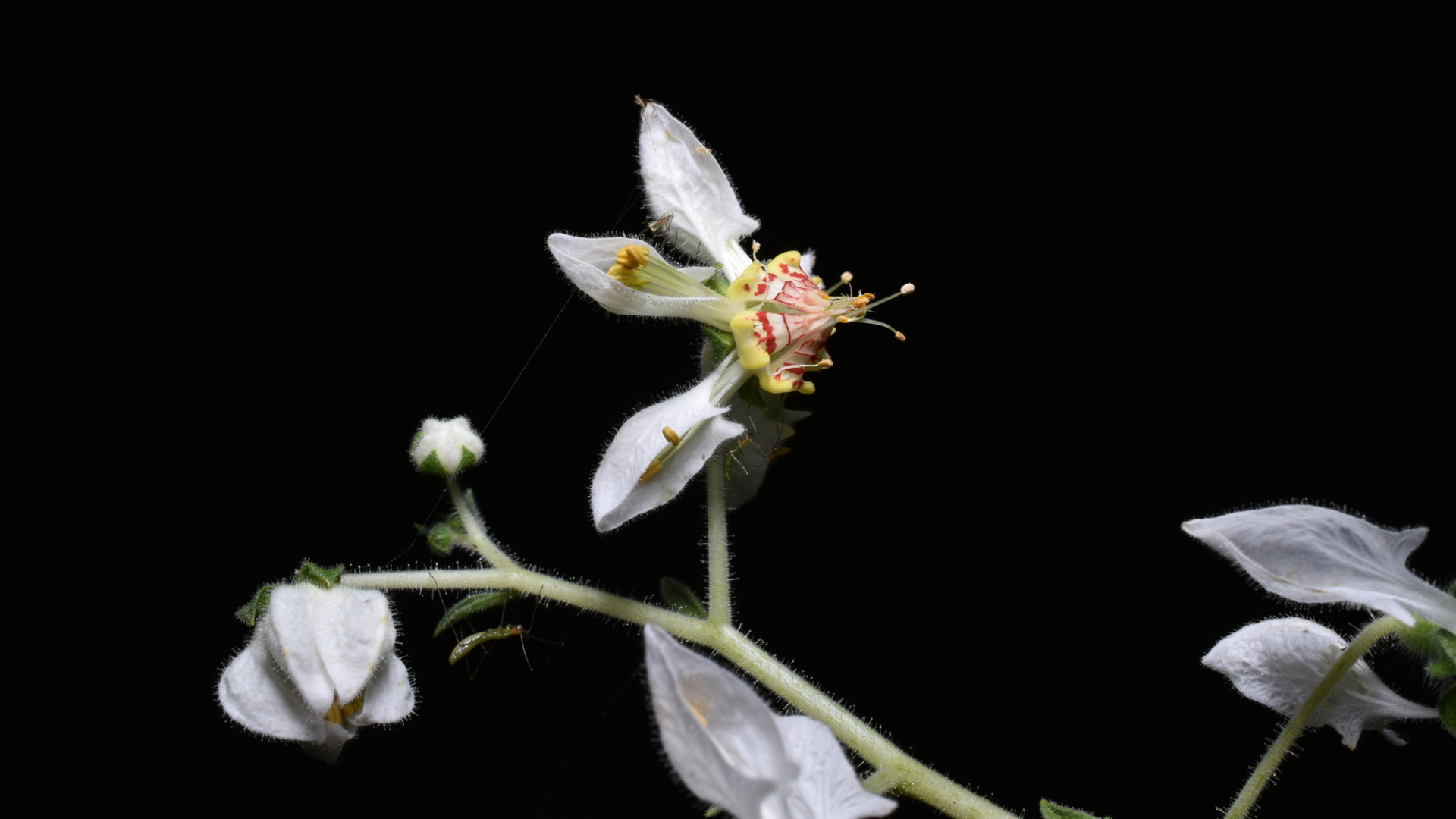In 1973, the bestselling book “The Secret Life of Plants” was published, captivating the public with questions about plant sentience and communication. Even if you haven’t read the book, you’ve probably heard of the experiments it describes: playing classical music and rock and roll to plants, for instance, or hooking them to a polygraph. The book even inspired a film with a soundtrack by Stevie Wonder.
The experiments were fun ideas, but poorly designed. Scientists strongly rejected the book and distanced themselves from its views. “According to botanists working at the time, the damage that Secret Life caused to the field cannot be overstated,” writes Zoë Schlanger in her new book “The Light Eaters: How the Unseen World of Plant Intelligence Offers a New Understanding of Life on Earth.” “Over the following years,” Schlanger reports, “the National Science Foundation became more reluctant to give grants to anyone studying plants’ responses to their environment.” And, she continues, “Scientists who had pioneered the field changed course or left the sciences altogether.”

BOOK REVIEW — “The Light Eaters: How the Unseen World of Plant Intelligence Offers a New Understanding of Life on Earth,” by Zoë Schlanger (Harper, 304 pages).
It took about 40 years — a generation of scientists — for that chilling effect to lift. Over the past 15 years, funding for plant behavior research has returned, at least in small amounts. Schlanger acts as tour guide through this history and the pressing questions new research poses about the shared future of plants and humans.
Considering the history of research on plant intelligence, the book’s subtitle may elicit skepticism. Even wildly popular books like “The Hidden Life of Trees” have come under criticism for getting ahead of the evidence when it comes to plant communication. But “The Light Eaters” delivers: Schlanger’s thinking is rigorous and she describes these contentious intellectual debates with a sense of fairness and curiosity.
There is clear excitement in Schlanger’s endeavors to meet the few scientists who have been able to push the field forward. Her exploration takes her all over the world: to a Chilean rainforest to see a plant that mimics others like a chameleon; the Hawaiian island of Kaua’i, which is home to a staggering number of rare and endangered plants; and the University of Bonn in Germany, to meet one of the founders of the Society for Plant Neurobiology (now called the Society of Plant Signaling and Behavior). It hasn’t been easy for the scientists she meets along the way. Although a few of the lucky and intrepid have painstakingly carved out a niche, Schlanger comes across many who put their careers on the line to research plants’ uncanny abilities to sense their world; some sadly left the field entirely. Others put their research on hold for decades, turning to teaching or more fundable research questions.
Despite the challenges in the field, Schlanger finds a vibrancy in her subject matter that contrasts sharply with her job as a climate journalist, where she began to burn out from all the grim news she was processing daily. “Journalists in my line of work tend to be focused on death. Or the harbingers of it: disease, disaster, decline,” she writes. She wanted to be around life, celebrate it, in a way she rarely could in her day job. “In this ruined global moment, plants offer a window into a verdant way of thinking,” she writes. The world’s flora “suffuse our atmosphere with the oxygen we breathe, and they quite literally build our bodies out of sugars they spin from sunlight,” she continues. “They have complex, dynamic lives of their own — social lives, sex lives, and a whole suite of subtle sensory appreciations we mostly assume to be only the domain of animals.”
“Understanding plants will unlock a new horizon of understanding for humans: that we share our planet with and owe our lives to a form of life cunning in its own right, at once alien and familiar.”
There is clear excitement in Schlanger’s endeavors to meet the few scientists who have been able to push the field forward.
Indeed, Schlanger covers how plants sense and respond to their environment — or the evidence that they have such senses, even if scientists don’t know the underlying mechanisms. Plants communicate through not only chemicals in the air and soil, but also, potentially, through sound. Air bubbles pop as water travels from a plant’s roots up through their stems, emitting an ultrasonic click. Each type of plant that has been studied — wheat, corn, grapevine, and cactus, for example — has a unique frequency. Plants can perceive touch and transmit electrical signals, too, which poses another way they can communicate. And these beings sense light in sophisticated ways that invoke comparisons to vision; a vine that grows in the Chilean rainforest, Boquila trifoliolata, can mimic nearby plants down to the leaf shape, texture, and pattern of venation, though no one yet knows how it can “see” its neighbors. Plants also have memory and social behaviors. A plant in the nettle family, Nasa poissoniana, can anticipate when a pollinator will visit its star-shaped flowers, based on past time intervals between visits, and will raise its pollen-bearing stamen.
Yet plants do not have brains: Their intelligence is not centralized, but rather a distributed network. “How does information about the world get integrated, triaged by importance, and translated into action that benefits the plant?” Schlanger asks. That is the question at the forefront of research, and whether plants are conscious is an ongoing — and raging — debate. Schlanger seems partial to an idea posed by neuroscientist Giulio Tononi that the complexity and integration of wave patterns of electricity indicate the level of consciousness of an organism. Consciousness, in this view, is a spectrum, not a binary.
One of the pitfalls of reaching for language to describe these phenomena is that it’s almost impossible to avoid some level of anthropomorphization. Describing how botanists have viewed the use of the word intelligence, Schlanger writes: “Measuring plants against human cognition made no sense; it just rendered plants as lesser humans, lesser animals.” Still, plants do “deploy several senses — or could one say, intelligences? — that far exceed anything humans can do in a similar category.” Scientists have wrapped this information in “layers of hedging, language that distances plants from ourselves at all costs,” ultimately making it challenging for their work to reach the public or other disciplines. Schlanger argues that people need understandable metaphors — ones that they can connect to but do not misinform them about how different plants are from humans. Or perhaps, she considers, we need to “vegetalize our language,” calling traits “plant-memory,” “plant-language,” or “plant-feeling.”
Schlanger explores why scientists missed such fundamental ideas about plants — even as many Indigenous traditions have treated them as kin, ancestors, or simply beings in their own right. Schlanger covers not only these Indigenous philosophies, but also how the influences on European thought of Aristotle and René Descartes led to treating living things as mechanistic and passive. Even though botanists use much more lively language in conversation, in their research papers they describe plant behaviors using passive voice. “A plant doesn’t ‘react,’ instead it ‘is affected,’” as Schlanger points out. “Articulating these processes without ascribing agency is actually quite difficult, fumbly, imprecise.”
Recognizing that plants are not simply passive, mechanistic groupings of cells, but rather intelligent beings, perhaps even worthy of personhood — meaning “one has agency and volition, and the right to exist for their own sake” — has tremendous moral, philosophical, and policy implications. Several legal arguments in recent years have grappled with the personhood of plants and ecosystems threatened by human activities. “At what point do plants enter the gates of our regard?” Schlanger asks. “Is it when they have language? When they have family structures? When they make allies and enemies, have preferences, plan ahead? When we find they can remember? They seem, indeed, to have all these characteristics. It’s now our choice whether we let that reality in.”
Schlanger repeatedly exposes the gaping distance between the public and scientists when confronted with the question of plant intelligence. For example, Monica Gagliano, a plant researcher in Australia, has become a “contested figure” in her field for her strong stands on studying plants’ ability to hear — and on using her intuition as well as evidence-based rigor. “She speaks to packed audiences at conferences on philosophy and at science events geared toward the general public,” writes Schlanger. At the same time, she is no longer funded through traditional federal grants, but instead by the Templeton World Charity Foundation.
“At what point do plants enter the gates of our regard?” Schlanger asks. “Is it when they have language? When they have family structures? When they make allies and enemies, have preferences, plan ahead? “
Readers who loved “The Secret Life of Plants” may be crestfallen to find out that the book harmed exactly the scientists they would have wanted to have helped. “Science’s biggest flaw and biggest virtue is that it almost always mistakes agreement for truth,” Schlanger writes. Questions about plant intelligence may even invoke a spiritual and moral dilemma within science, a paradox on which historian Jessica Riskin at Stanford University has written: “The seventeenth-century banishment of agency, perception, consciousness, and will from nature and from natural science gave a monopoly on all of these attributes to an external god.” Early scientists avoided these topics because this view of nature fit with religious ideas at the time. “They bequeathed to their heirs a dilemma that remains active over three centuries later.”
Acknowledging plants’ agency could rid science of this vestige of the past, and, Schlanger wagers, bring about a new paradigm, one that integrates nature with humans and acknowledges the agency of all life. “Plants will go on being plants, whatever we decide to think of them,” notes Schlanger. “But how we decide to think of them could change everything for us.”
Katie L. Burke is an award-winning features editor and science journalist. She is a senior contributing editor at American Scientist.











I received my copy of Zoe’s book a few days ago and read it every free moment I had. Mind blowing information throughout, and as noted, rigorously researched and reported. A must read!
When I first heard about her book, it was the title that caught my attention because it seemed to be a concept similar to “harvesting sunlight energy,” which I think is a far more helpful way to describe what we need than is “renewable energy.” “Renewable” is a mushy, feel good word that certain corporate interests seem to like, but what plants do, and we need to emphasize, is that sunlight constantly flows to our earth and harvesting that flow is our task. That flow of energy also is the driving force behind wind and water sources and it’s what solar panels do directly. And those “light eaters” harvest the energy that become part of the food that gives me the energy to write this (among other things of course) comment!
Another concept that I think deserves more attention is the “life force” that has driven the ongoing complexity of living things since our LUCA. The term has often been couched in mystical or spiritual traditions, but it is clearly an ongoing physical/scientific phenomenon that ties all living things today together. It constantly seeks a myriad of pathways, testing options and their “fitness” along the way. Some branches die out, others thrive to continue down a path. If humanity proves “unfit,” other branches will go on without us.